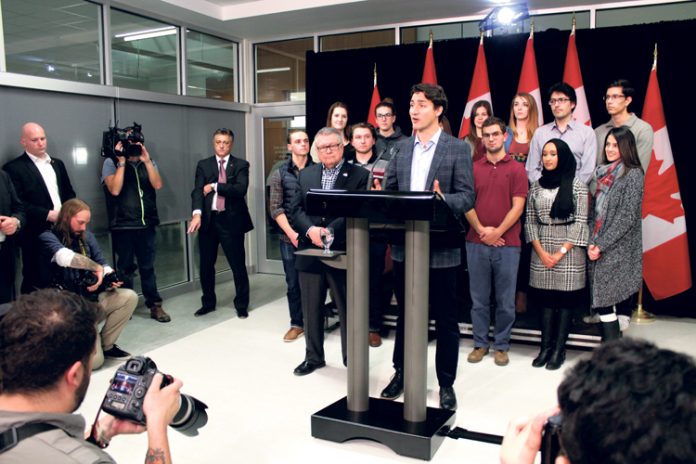
The 2017-18 federal budget might as well be called the buzzword budget.
The 280-page document contains billions of dollars worth of new spending buried amongst pages of rhetoric and hypothetical situations.
Titled ‘Building a Strong Middle Class,’ the document contains 108 instances of the phrase “middle class,” and 228 uses of the word “innovation.”
Those are the themes of the budget, which takes big bets on Canada’s future as an attractive place for academics, as well as budding businesses taking on a new, inter-connected future of new technology and digital strength.
It appears it could almost be considered an anti-Trump budget – full of measures to strengthen scientific and environmental progress, while attracting top foreign talent to the nation as the US clamps down on scientific spending and closes its borders to would-be skilled immigrants.
“Attracting investment and talent to Canada will be key, along with taking concrete steps to equip Canadians with the skills they need to get the most out of an innovation-driven economy,” the introduction to the document reads.
“(The budget) will also make big bets in high-growth sectors of the economy, including clean technologies, digital industries and agri-food, to secure Canada’s place as a world-leading centre for innovation.”
The budget operates on fairly conservative estimates of global markets, predicting a US $50 per barrel price of oil over the next five years, and building in a budget risk of $3 billion.
While the federal government will be running a deficit and borrowing to make up the difference, according to estimates from private sector economists, the nation’s debt-to-GDP ratio shouldn’t exceed 32.5 per cent by 2021-22, and could fall as low as 28.4 per cent. That difference amounts to about $5.8 billion in either direction.
Canada’s debt-to-GDP ratio, an important measure of a body’s ability to sustain debt, is the lowest among all the group of seven countries.
For much more on the federal budget, please see the March 24 print or e-edition of the Daily Herald.

